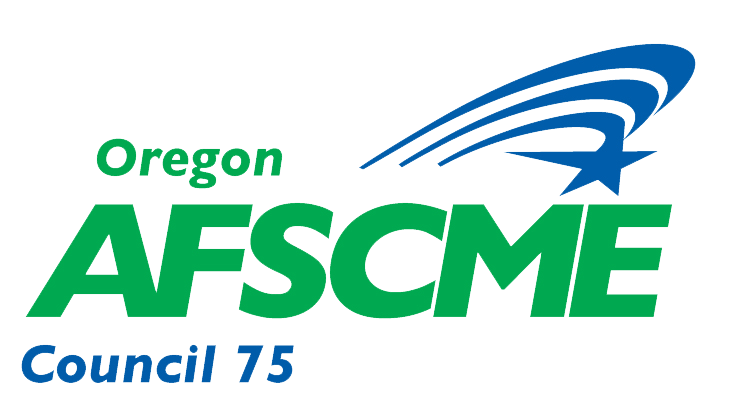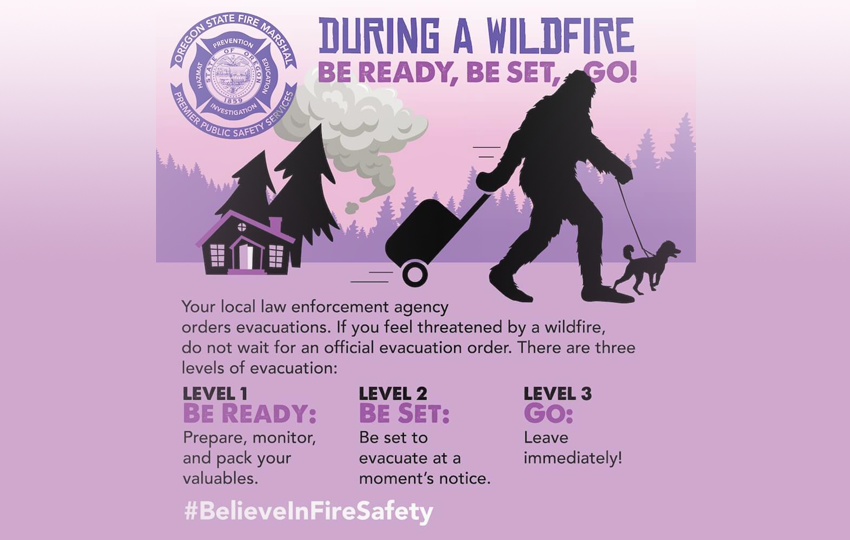Oregon AFSCME members who lost their homes to fire or faced other financial hardships are encouraged to apply for financial relief through the Oregon AFSCME Wildfire Relief Fund.
Over the next week or so, Oregon AFSCME staff will follow-up with applicants to confirm eligibility as well as contact info and the best way to deliver financial assistance. Those affected must be members in good standing to be considered.
Apply for Wildfire Relief Fund financial assistance
Solicitud en Espanol - https://forms.gle/kHNiwxT7bspUZMok7
Oregon AFSCME members have been calling for a way to donate to their union siblings in need, and now we have a method to do so. 100% of the funds donated to Oregon AFSCME's Wildfire Relief Fund will go directly to Oregon AFSCME members and their families affected by the wildfires.
Click here to donate to Oregon AFSCME's Wildfire Relief Fund*
*Donations are not tax-deductible
IF YOU ARE UNDER A WILDFIRE WARNING, FOLLOW THESE SAFETY TIPS:
- Sign up for your community’s early warning system. The city/town/county’s web page or the fire agency will have information on how to do that.
- Listen for emergency information and alerts. Watch official social media pages for city/town/county and fire agencies for the most up to date information.
- Prepare or “Be Set” to evacuate so you are ready to go.
- Leave if you feel unsafe (any level).
- Leave if told to do so (level 3).
- If trapped, call 9-1-1.
- Use KN95/N95 masks or a dampened cloth mask to help keep particles out of the air you breathe.
Displaced by wildfires?
Here's what you need to know about voting.
- Displaced people have until October 13th to decide where they want their ballot sent. Provisional ballots should be a last resort.
- Even though we vote by mail, it’s okay if you do not have an address. You can provide any physical address to receive your ballot which can include a shelter, motorhome or any location with an address.
- The mailing address of someone that is homeless or resides where mail service is unavailable can be the office of the county clerk, you can also pick up your ballot at the county election office.
- If you end up in a different county you have until October 13th to decide where to send your ballot.
- You can also show up and cast a provisional ballot in a county if you are a resident if you have been displaced.
Below are helpful links for staying safe during, preparing for, and recovering from, a wildfire event
Smoke and Air Quality
- Oregon Smoke Info provides updates via an interactive map with the locations of current fires and the latest information about air quality advisories.
- Oregon DEQ manages the OregonAIR app to show the latest air quality data in your area.
- Oregon Health Authority's fact sheet on smoke and air quality is a helpful resource. Multnomah County's materials on smoke and wildlife include helpful tips for keeping your family safe.
Power Outages
- Some Oregonians may be experiencing power outages from safety shut-offs or because of the windy weather conditions.
- Information about power shutoffs can be found here on the PGE website.
Road Closures
- Many roads may be closed because of the fires. If possible, remain close to home. If you must travel, be cautious, and please check the Oregon Department of Transportation TripCheck for the latest conditions – which can change rapidly – before you go.
Preparing/Awareness of Wildfire
OHA: Reducing Health Effects of Wildfire Smoke (Multiple Languages)
Red Cross: Be Prepared For Wildfires During COVID-19
Ready, Set, Go! Wildfire Action Plan
Ready, Set, Go! Wildfire Emergency Supply Kit
Resources for Kids
OSFM: Guide to Home Fire Escape Planning English
OSFM: Guide to Home Fire Escape Planning Spanish
Evacuating Because of Wildfire
Red Cross: Info On Finding Shelters
After Wildfire
OSFM: What To Do After a Wildfire
FEMA: What To Do After a Wildfire
There are three levels of evacuation.
Wildfire Evacuation: Levels
Fire season requires residents to be at an increased awareness for the dangers of wildfire. Your local fire agency takes every precaution to help protect you and your property from fire. During a large wildfire, there may not be enough fire engines or firefighters to defend every home. It’s important that you make a Wildfire Action Plan (link below) to be prepared.
Your local law enforcement agency orders evacuations. Sign up for local early warning systems and follow official social media pages. If you feel threatened by a wildfire, do not wait for an official evacuation order.
Level 1 Evacuation means “BE READY” for potential evacuation. Residents should be aware of the danger that exists in their area, monitor emergency services websites and local media outlets for information. This is the time for preparation and precautionary movement of persons with special needs, mobile property and (under certain circumstances) pets and livestock. If conditions worsen, emergency services personnel may contact you via an emergency notification system.
Level 2 Evacuation means “BE SET” to evacuate. You should be ready to leave at a moment’s notice as this level indicates there is a significant danger to your area, and residents should either voluntarily relocate to a shelter or with family/friends outside of the affected area. Residents may have time to gather necessary items, but doing so is at their own risk.
Level 3 Evacuation means “GO” evacuate NOW – leave immediately! Danger to your area is current or imminent, and you should evacuate immediately. If you choose to ignore this advisement, you must understand that emergency services may not be available to assist you further. DO NOT delay leaving to gather any belongings or make efforts to protect your home.
If you are advised to evacuate, take your emergency supply kit (link below), lock your home, and choose a route away from the fire hazard. Watch for changes in the speed and direction of the fire and smoke. Tell someone when you left and where you are going. Shelter information can be found (link below) on the Red Cross’s website or local official social media pages.
Remember the eight Ps in case immediate evacuation is required: people, pets, personal computer, prescriptions, paperwork (important documents), pictures, phone (cell), and plastic (credit/bank cards).

